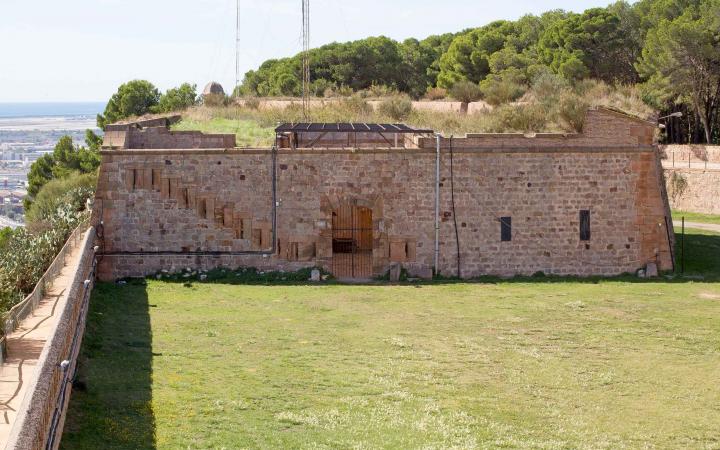The seaward lunette, with an irregular quadrilateral layout, functioned as an extension of the Llengua de Serp Bastion. It was guarded by a small detachment and featured independent quarters distributed around an open courtyard. A report dating from 1828 notes that it could accommodate from 76 to 86 men.
Prior to Cermeño’s intervention, the sector where the seaward lunette is now situated was part of the former Llengua de Serp demi-bastion. When his plan was implemented, a whole new bastion was built and the extreme end was converted into the lunette, an independent outwork. The defence of this area was completed by another lunette in the middle on the right-hand side.
In the early twentieth century, the gunpowder stored in the old Montjuïc magazine was moved to the one in the lunette. Although there is no record of what happened to this structure after the 1920s, it may well have been abandoned when the artillery in the castle were reduced to just four antiaircraft batteries located on the Sant Carles bastion and, later on, on the hornwork.
The area of the landward lunette was the weakest in the entire castle and so this was where work first started in 1753. During its useful life, the landward lunette protected the southern tip of the outer ward. The rooms inside were used as a guardhouse and an artillery magazine.
The structure has a pentagonal layout, the typical shape of a bastion, with a westward-facing angle. It is located inside the moat and accompanied the Llengua de Serp Bastion as a defensive structure. Like the seaward lunette, it had independent quarters for a small detachment allocated to its defence, which could accommodate between 144 and 124 men, according to a report from 1828. On top there are eight embrasures, intended to cover the facades against a possible attack on the castle in that sector.







